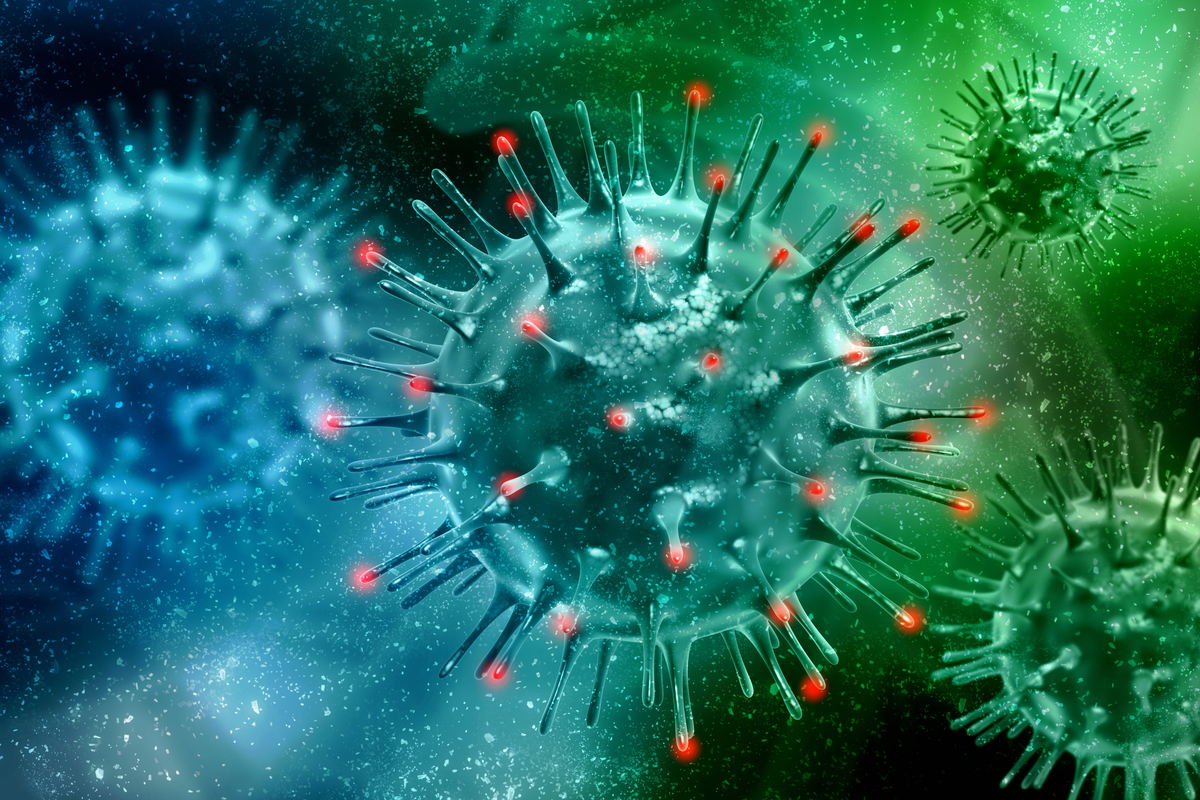In a recent study published in Science Translational Medicine, researchers characterized a human antibody targeting betacoronaviruses (β-CoVs).
 Study: A human antibody reveals a conserved site on beta-coronavirus spike proteins and confers protection against SARS-CoV-2 infection. Image Credit: jijomathaidesigners/Shutterstock
Study: A human antibody reveals a conserved site on beta-coronavirus spike proteins and confers protection against SARS-CoV-2 infection. Image Credit: jijomathaidesigners/Shutterstock
Background
Severe acute respiratory syndrome coronavirus-2 (SARS-CoV-2) from the coronaviridae family is the etiologic agent of the current coronavirus disease 2019 (COVID-19) pandemic. In the past, six other coronaviridae family members (HCoV-229E, HCoV-HKU1, HCoV-OC43, HCoV-NL63, SARS-CoV-1, and MERS-CoV) have crossed animals and infected humans. Apart from SARS-CoV-1 and MERS-CoV, responsible for severe illness, high morbidity, and mortality, the four other human coronaviruses (HCoVs) cause endemics leading to non-severe seasonal infections. There is a growing concern that coronavirus spillovers in the future might lead to new pandemics.
Broadly neutralizing antibodies (bnAbs) against coronaviruses (CoVs) can be helpful for therapeutic and prophylactic measures. A thorough examination of epitopes of bnAbs can be valuable for designing pan-coronavirus (pan-CoV) vaccines.
The study
In the present study, researchers studied CC40.8, a bnAb isolated from a COVID-19 convalescent patient. Previously, these researchers had illustrated the neutralization of SARS-CoV-1 and SARS-CoV-2 by CC40.8 and its cross-reactivity with other human β-CoVs. Moreover, they found that the CC40.8 antibody-targeted the base of HCoV spike proteins' S2 subunit as observed using negative-stain electron microscopy (ns-EM).
Results
The authors found effective neutralization of clade 1a and 1b angiotensin-converting enzyme 2 (ACE2)-utilizing sarbecoviruses by the CC40.8 bnAb. CC40.8 was also effective against SARS-CoV-2 variants due to the absence of mutations in the variants' highly conserved S2 stem helix region. Cell-cell inhibition assay revealed the ability of the CC40.8 bnAb to prevent the fusion of HeLa cell expressing SARS-CoV-2 spike protein with the HeLa cell displaying human ACE2 (hACE2) receptor.
The epitope for CC40.8 binding was identified in the HCoV-HKU1 S2 subunit in its stem helix region. Further screening by biolayer interferometry (BLI) identified a 25-residue stretch with the highest binding affinity corresponding to the 1226-1250 part of the HCoV-HKU1 S2 sequence. The binding of CC40.8 to similar S2 domains from other HCoVs was assessed with BLI. Antibody binding to the S2 subunit epitope was observed for β-HCoVs, while the S2 domain from α-HCoVs failed to bind.
The crystal structure of the epitope-antibody complex was elucidated at 1.6 Å resolution. The 25-mer S2 peptide (epitope) was observed to have a helical structure across the hydrophobic groove between light and heavy chains of the CC40.8 Fab fragment. Structure analysis of the complex identified the epitope for CC40.8 bnAb containing two peptide stretches - 1142QPELD1146 and 1151ELDKYF1156 and some nearby residues like F1148, N1158, and H1159.
The researchers evaluated the in vivo efficacy of CC40.8 bnAb. hACE2 expressing mice and Syrian hamsters were inoculated with SARS-CoV-2 after passive antibody transfer. The CC40.8 antibody was inoculated intraperitoneally (i.p.) at four varying concentrations (300 μg, 100 μg, 50 μg, and 10 μg per animal) in different groups of hACE2 mice.
Positive control was established with RBD antibody (CC12.1) and negative control with Zika-specific antibody (SMZAb1). Twelve hours post-antibody infusion, the mice were i.p. injected with 2 x 104 plaque-forming units (PFUs) of SARS-CoV-2, and weight loss of mice was monitored. Sera were regularly analyzed for antibody concentration. On day five, the mice were euthanized and their lungs collected for measuring SARS-CoV-2 titers.
The CC40.8-treated mice demonstrated significantly reduced weight loss compared to SMZAb1-treated mice. Viral RNA copies were also low in CC40.8-treated mice than SMZAb1-treated mice. Similar results were obtained for Syrian hamsters, and overall, these findings indicate that the CC40.8 bnAb elicits substantial in vivo protection despite low neutralization potency observed in vitro.
Conclusions
The research team evaluated the effects of CC40.8 bnAb on neutralizing S2 from different HCoVs. Structural studies and epitope mapping identified the critical 25-mer stretch of amino acids in the stem helix region of SARS-CoV-2 S2 that forms the epitope for CC40.8 bnAb. Unlike the S1 subunit of spike protein, this region is relatively conserved across β-CoVs and may be explored as a potential target for pan-β-CoV vaccine strategies.
The authors note that natural infection with HCoVs causes less frequent elicitation of S2 stem helix-directed antibodies, nonetheless in COVID-19 infection, polyclonal antibodies targeting the stem helix have been identified lately. The in vivo efficacy was determined in mice against SARS-CoV-2 only, and that against other β-CoVs remains to be ascertained. Even at a low dose of CC40.8, the hACE2 mice were well protected, and therefore more research is required to understand the possibility of other factors conferring protection.